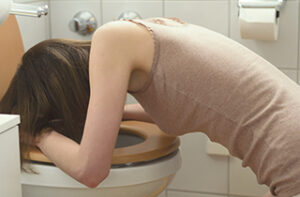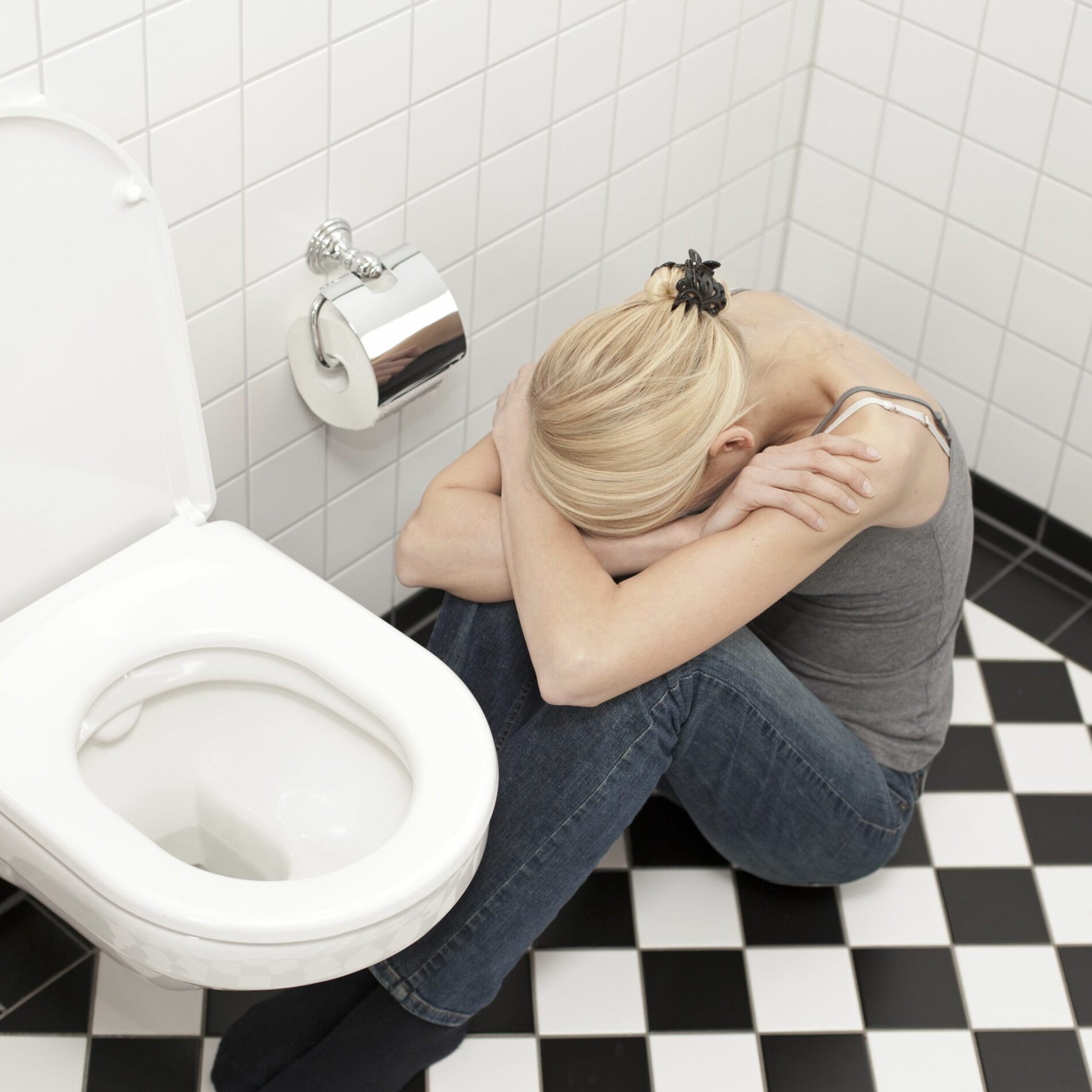It’s that time of year again when the urge to purge hits us all. Suddenly, we can’t stand the sight of all the clutter in our kitchens and we’re determined to get rid of it all! If you’re feeling overwhelmed by the amount of food in your kitchen, don’t worry – you’re not alone. In this blog post, we’ll talk about how to purge your food and declutter your kitchen once and for all. Follow these simple tips and you’ll be able to create a more organized and functional space in no time!
Contents
- 1 What Does “Purging Food Disorder” Mean?
- 2 Signs of Purging Food Disorder
- 3 Causes of Purging Food Disorder
- 4 Negative Impacts of Purging Food Disorder
- 5 Diagnosis of Purging Food Disorder
- 6 Treatment of Purging Food Disorder
- 7 Types of Therapy For Purging Food Disorder
- 8 Self-Help Strategies For Purging Food Disorder
- 9 How To Help Someone With Purging Food Disorder?
- 10 Conclusion
What Does “Purging Food Disorder” Mean?
 Purging food disorder is a condition where people feel the need to get rid of food, usually after eating. This can be done by throwing it up, taking laxatives, or over-exercising. People with purging food disorder usually have a lot of anxiety about food and their weight.
Purging food disorder is a condition where people feel the need to get rid of food, usually after eating. This can be done by throwing it up, taking laxatives, or over-exercising. People with purging food disorder usually have a lot of anxiety about food and their weight.
Purging food also means that you are constantly getting rid of food that you don’t want to eat. This might be because it’s unhealthy, or you’re trying to lose weight. Either way, purging food can be a satisfying way to get rid of the clutter in your kitchen. Purging food also means that you are less likely to overeat.
So, if you’re looking for a way to declutter your kitchen and your life, purging food might be the answer! Just remember to be safe and healthy about it. Talk to your doctor if you think you might have to purge food disorder, or if you’re not sure how to purge food safely.
Signs of Purging Food Disorder

There are many signs of purging food disorder, both physical and behavioral. Some common physical signs include:
Weight Loss
Weight loss is a common sign of a purging food disorder. This is because people with this disorder often throw up after eating, or they may take laxatives to get rid of the food. Some people with purging food disorder also over-exercise to burn off the calories from food. Weight loss may be sudden or it may happen slowly over time.
Eating in Secret
People with purging food disorder often eat in secret because they’re ashamed of their eating habits. They may also avoid eating in front of other people, or they may only eat certain foods when they’re alone.
People with purging food disorder often avoid social situations because they’re afraid of being seen eating. They may also avoid social situations because they’re worried about what other people will think of them.
Missing work or school
Another common sign of purging food disorder is missing work or school. This is usually because people with this disorder are too tired or sick to go to work or school.
Isolating yourself
People with purging food disorders often isolate themselves because they’re ashamed of their eating habits. They may also isolate themselves because they don’t want other people to see them eating.
Avoiding Food
People with purging food disorder often avoid eating, because they are afraid of gaining weight. They may also avoid social situations where food is present. Avoiding food may be difficult, but it’s often necessary for people with purging food disorders.
Preoccupation With Food
People with purging food disorder are often preoccupied with thoughts of food and their weight. They may spend a lot of time thinking about what they will eat, and how many calories they will consume.
Body Dysmorphia
Many people with purging food disorder have body dysmorphia, which means that they see themselves as much larger than they actually are. This can lead to a lot of anxiety and distress about their appearance. There may be some truth to the idea that people with purging food disorder have a distorted view of their bodies, but it’s also important to remember that everyone’s body is different.
Causes of Purging Food Disorder

There are many causes of purging food disorder, but the most common is a need to control weight or shape. People with bulimia nervosa often have a fear of gaining weight and see purging as a way to prevent weight gain. Other causes include:
History of Dieting
When there is a history of dieting, there is often a need to control weight or shape. This can lead to purging food disorder. When there is a history of dieting, people often see food as the enemy. This can lead to a lot of anxiety and stress about food and weight. Sometimes there are also other mental health disorders that can lead to dieting, such as anorexia nervosa.
Low Self-Esteem
People with purging food disorder often have low self-esteem. They may feel like they’re not good enough, or they may feel like they don’t deserve to be happy. This low self-esteem can lead to a need to control weight or shape. Sometimes there are also other mental health disorders that can lead to low self-esteem, such as depression.
Trauma
Some people with purging food disorder have experienced trauma in their lives. This trauma can be related to food, such as being teased about weight or shape. Or, the trauma can be unrelated to food, such as sexual abuse. Trauma can lead to a lot of anxiety and stress, which can then lead to purging food disorder. It may be difficult to talk about trauma, but it’s important to remember that you’re not alone.
History of Eating Disorders
There are often other eating disorders in the family, such as anorexia nervosa or bulimia nervosa. This can lead to a purging food disorder. Often, people with purging food disorder have a need to control weight or shape. Many a times there are other mental health disorders that can lead to eating disorders, such as depression or anxiety.
Genetics
Genetics are often a factor in purging food disorders. Often, people with purging food disorders have a family history of eating disorders. This can lead to a purging food disorder. Often, people with purging food disorder have a need to control weight or shape. Sometimes there are also other mental health disorders that can be genetic, such as depression or anxiety. It may also be helpful to talk to a genetic counselor if you’re worried about your risk for purging food disorder.
Body Dissatisfaction
Body dissatisfaction is often a factor in purging food disorders. People with purging food disorder often feel like their bodies are not good enough. They may feel like they need to lose weight or change their shape. This can lead to a lot of anxiety and stress, which can then lead to purging food disorder. Sometimes there are also other mental health disorders that can lead to body dissatisfaction, such as depression or anxiety.
Negative Impacts of Purging Food Disorder

There are many negative impacts of purging food disorder, both physically and emotionally. Physically, purging can lead to dehydration, electrolyte imbalances, and gastrointestinal problems. Emotionally, purging food disorder can lead to anxiety, depression, and body dysmorphia.
Some of these impacts are:
Dehydration
Dehydration is one of the most common side effects of purging food disorder. When you purge, your body loses a lot of fluids. This can lead to dehydration, which can then lead to other problems such as electrolyte imbalances and gastrointestinal problems. There are also emotional impacts of dehydration, such as anxiety and depression. It may also be helpful to talk to a doctor if you’re worried about dehydration.
Electrolyte Imbalances
Electrolyte imbalances can lead to serious health problems, including dehydration, heart arrhythmias, and seizures. When you purge food, you’re also purging electrolytes. This can lead to an imbalance in your body’s electrolyte levels. There may also be other health risks associated with purging food, such as electrolyte imbalance, that is not yet known. It may be best to avoid purging food altogether.
Gastrointestinal Problems
Gastrointestinal problems are another common side effect of purging food disorder. When you purge, your body tries to get rid of the food as quickly as possible. This can lead to cramping, bloating, diarrhea, and vomiting. These symptoms can be uncomfortable and embarrassing.
Face Swelling
Face swelling is one of the most noticeable side effects of purging. When you purge, your body releases fluids into your bloodstream to try to dilute the toxins in the food you’ve eaten. This can lead to facial swelling, especially around the eyes. It may also lead to puffy cheeks and a bloated appearance.
Hair Loss
Hair Loss is one of the most distressing side effects of purging food disorder. When you purge, your body is trying to get rid of toxins as quickly as possible. This can lead to hair loss, which can be very upsetting. It may also lead to other health problems, such as anemia.
Anxiety
Anxiety is a common side effect of purging food disorder. People with purging food disorder often feel like they need to control their weight or shape. This can lead to a lot of anxiety and stress, which can then lead to purging food disorder. Sometimes there are also other mental health disorders that can lead to anxiety, such as depression or anxiety. It may also be helpful to talk to a therapist if you’re worried about your anxiety.
Depression
Depression is one of the most common mental disorders, and it can have a profound effect on your life. It can cause you to lose interest in activities that you once enjoyed, make it difficult to concentrate, and affect your sleeping habits. It can also lead to physical problems such as headaches, fatigue, and stomach trouble. It may also cause you to overeat or lose your appetite altogether.
Mood Swings
Mood swings are another common symptom of depression. One minute you may feel happy and content, and the next you may feel angry or sad. You may also have changes in your sleeping patterns and energy levels. It may also be difficult to concentrate or make decisions.
Fatigue
Fatigue is one of the most common symptoms of depression. It can be hard to get out of bed in the morning, and you may feel exhausted all day long. This fatigue can also lead to other problems, such as trouble concentrating and making decisions. Sometimes there may also be other physical problems, such as headaches or stomach trouble.
Irritability
Irritability is another common symptom of depression. You may find yourself snapping at people more easily than usual, and you may have a hard time dealing with everyday stressors. This irritability can also lead to other problems, such as social withdrawal and difficulty concentrating.
Trouble Concentrating
Trouble concentrating is one of the most common symptoms of depression. It can be hard to focus on work, school, or even simple tasks like reading or watching television. This difficulty concentrating can also lead to other problems, such as social withdrawal and irritability. Sometimes there may also be physical problems, such as fatigue or headaches.
Headaches
Headaches are a common side effect of purging food disorder. When you purge, your body releases chemicals into your bloodstream that can cause headaches. These headaches may be mild or severe, and they may come and go. If you’re having headaches, it’s important to see a doctor so they can rule out any other causes.
Diagnosis of Purging Food Disorder
Diagnosis of purging food disorder is difficult because there are no physical signs or symptoms. The only way to diagnose the disorder is through a psychological evaluation.
The psychological evaluation will assess your thoughts, feelings, and behaviors related to food and eating. It will also look at how purging affects your life and well-being.
If you have to purge food disorder, you may:
* Feel like you can’t control your eating habits
* Feel like you have to purge after every meal or snack
* Spend a lot of time thinking about food and weight
* Avoid social activities that involve food
* Miss work or school due to purging
* Have difficulty concentrating on anything other than food and weight
* Experience anxiety or depression
* Have blood in your stool
* vomit frequently
If you think you or someone you know may have to purge food disorder, talk to a doctor or mental health professional. Treatment can help you manage the disorder and improve your quality of life.
One should also have a support system to help them through this difficult time. This can be friends, family, or a therapist. If you are struggling with a purging food disorder, please reach out for help. One should always visit a doctor for professional diagnosis and treatment.
If you have purging food disorder, treatment can help you manage the condition and improve your quality of life. Reach out for help if you are struggling. You don’t have to go through this alone.
Treatment of Purging Food Disorder

The treatment of purging food disorder usually involves a combination of therapy and medication.
Medication
Medication is used to treat the symptoms of purging food disorders, such as anxiety and depression. There are many types of medications that can be effective. Some medications that are commonly used to treat purging food disorders include:
* Antidepressants
* Anti-anxiety medication
Therapy
Therapy is an important part of treatment for purging food disorder. It can help you understand your thoughts and feelings about food and eating. Therapy can also teach you healthy coping skills. Some types of therapy that are commonly used to treat purging food disorder include:
* Cognitive behavioral therapy (CBT)
* Dialectical behavior therapy (DBT)
Support Groups are one way of getting help for purging food disorders. These groups provide a space for you to share your experiences and connect with others who understand what you’re going through.
These also provide helpful resources and information about purging food disorders.
If you are struggling with a purging food disorder, please reach out for help. You don’t have to go through this alone. There are many people who want to help and support you.
Types of Therapy For Purging Food Disorder

There are many types of therapies for people with purging food disorders. Some popular therapies include:
Cognitive-behavioral therapy
This type of therapy helps people change the negative thoughts and behaviors that contribute to their purging disorder. Cognitive type therapy is also one of the most effective treatments for bulimia. There may be individual, group, or family sessions involved in this type of therapy.
Interpersonal psychotherapy
This therapy focuses on the relationships between people and how they affect a person’s eating habits. This type of therapy can help identify problem areas in a person’s life that may be triggering their purging disorder. Interpersonal therapy is usually done in group sessions.
Nutritional Counseling
A nutritionist or dietitian will work with a person with a purging disorder to develop a healthy relationship with food. They will teach them about portion sizes, and balanced meals, and make sure they are getting the nutrients their body needs.
Exercise Program
The goal of an exercise program is to help a person with a purging disorder develop a healthy relationship with their body. They will learn how to use exercise as a way to cope with stress and anxiety instead of using food.
Dialectical Behavior Therapy
This type of therapy is used to help people with purging disorder regulate their emotions. Dialectical behavior therapy teaches people skills like mindfulness and emotional regulation. This type of therapy is usually done in group sessions.
Support groups
Support groups are a great way for people with purging disorder to connect with others who are going through similar experiences. Support groups provide a safe space for people to share their thoughts and feelings about their disorder. These groups can be online or in-person.
If you or someone you know is struggling with a purging food disorder, there is help available. There are many effective treatments that can help people manage their disorders and lead healthy lives. Talk to your doctor about what treatment options may be right for you.
Self-Help Strategies For Purging Food Disorder

There are many self-help strategies for purging food disorders. The most important thing is to get rid of the clutter in your kitchen. This will help you to focus on healthy eating habits.
Another self-help strategy is to keep a food journal. This will help you to track your eating habits and see where you need to make changes.
Some of these self-help strategies are:
Keep Track of Triggers
Keeping track of your triggers is a helpful way to avoid them. Triggers are things that can cause you to relapse into your disorder. Some common triggers include:
* Stress
* Boredom
* Depression
Identify Your Emotional Eating Patterns
Emotional eating is when you eat in response to your emotions, instead of hunger. This can be a difficult pattern to break, but it’s important to identify it so you can work on changing it.
Some common emotional eating patterns include:
* Eating when you’re happy
* Eating when you’re sad
* Eating when you’re bored
Find New Coping Mechanisms
It’s important to find new coping mechanisms that don’t involve food. This will help you to avoid triggering your disorder. Some new coping mechanisms include:
* Exercise
* Meditation
* Deep breathing exercises
Change Your Thought Patterns
Negative thoughts can be a trigger for purging food disorder. It’s important to change these thought patterns so you can avoid relapse. Some helpful ways to change your thought patterns include:
* Challenging your negative thoughts
* Practice positive self-talk
* Finding things to be grateful for each day
Purging food disorder is a serious condition that requires treatment. If you or someone you know is struggling with this disorder, there are many resources available to help. Talk to your doctor about what treatment options may be right for you. You can also find self-help strategies that can be helpful in managing your disorder. With help, you can lead a healthy and fulfilling life.
Contact MantraCare for self-help strategies and therapy for Purging Food Disorders.
MantraCare is a website that provides self-help strategies and therapy for Purging Food Disorder. If you or someone you know is struggling with this disorder, we can help. We offer a variety of resources that can help manage your disorder. With our help, you can lead a healthy and fulfilling life. Contact us today to learn more about our services.
How To Help Someone With Purging Food Disorder?
Helping someone with a purging food disorder can be difficult. You may not know how to help or what to say. Here are some tips:
Educate Yourself With Disorder
You should also educate yourself about the disorder. This will help you to understand what the person is going through and how you can best support them. There are many resources available that can help you to learn about purging food disorders.
Be There For Them
It’s important to be there for the person struggling with a purging food disorder. This means being supportive and understanding. You should listen to them and offer advice when asked. However, you should not try to force them to do anything they’re not comfortable with.
Encourage Them To Seek Help
If the person is struggling with purging food disorder, it’s important to encourage them to seek help from a doctor or therapist. This is the best way to ensure they get the treatment they need.
Provide Practical Support
You can also provide practical support to someone with a purging food disorder. This may include helping them with groceries or cooking meals. You can also offer to go with them to doctor’s appointments or therapy sessions.
Find A Support Group
There are many support groups available for people with purging food disorders. This can be a great way for the person to connect with others who understand what they’re going through. It can also provide a sense of community and support.
If you or someone you know is struggling with a purging food disorder, there is help available. There are many resources that can be helpful in managing this disorder. With the right help, you can lead a healthy and fulfilling life. Contact MantraCare today to learn more about our services. We can help you or your loved one get the treatment and support you need.
Conclusion
Purging food disorder is a mental health condition characterized by an excessive preoccupation with food and the need to control one’s intake. It can be a difficult disorder to live with, but there are treatments available that can help. If you think you may have to purge a food disorder, talk to your doctor or mental health professional.
This type of disorder also doesn’t discriminate. You can be of any age, weight, or gender and still suffer from it. The most important thing to remember is that you are not alone and there is help available. There maybe be light at the end of the tunnel, but it’s okay to ask for help to get there.
You can also contact us for more information about purging food disorders and how they can help you to cure purging food disorders. We are always happy to chat and answer any questions you may have. MantraCare is a therapy app that can be used to help you find help for eating disorders. It is available on the App Store and Google Play. Give it a try today! You may be surprised at just how much better you feel. Thanks for reading. You can also book a therapy or download our free Android or iOS app.


